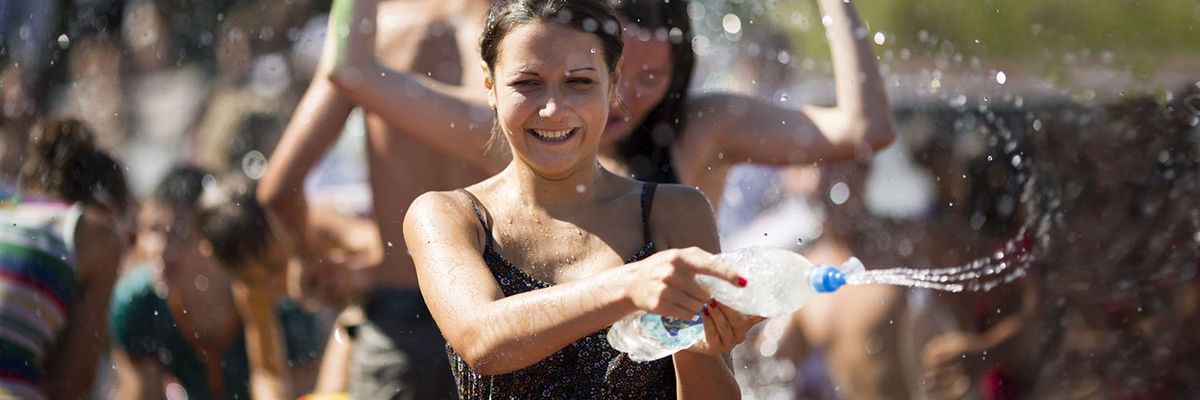
In the radiant heat of Latin America, under a brilliant blue sky, Dia de San Juan, or Saint John's Day, was once celebrated with an enigmatic ritual – a day of water, a celebration of life, a rite marking the start of the summer season or the onset of monsoon season.
Every year on June 24, Latin American countries and communities would revel in the festivities of Dia de San Juan, commemorating the nativity of Saint John the Baptist. It's an ancient tradition inherited from Spain but thoroughly transformed and adapted. Among these traditions, the most famous and high-spirited was the act of water-throwing.

Children would fill their buckets, adults their pans, and some would dive into rivers, all to fetch the most precious element - water. Cities would erupt into laughter and squeals as everyone drenched each other in celebration. This ritual, infused with symbolism, represented the purification of the soul, cleansing, and renewal.
The festival was a visual spectacle, an emotional catharsis, and a communal bonding moment that brought communities together. It was not merely a celebration; it was a form of cultural expression.
As the 21st century progressed, this tradition began to evolve. Technological advancements and increasing urbanization made the ritual less about river water and more about man-made water balloons, squirt guns, and inflatable pools. While the form changed, the festival's spirit stayed the same, as the essence of Dia de San Juan was not the water itself but the joy, the unity, and the sense of belonging it brought.

However, over time, the undercurrent of an imminent water crisis started to tinge the festivities with a shade of concern. The splashes that once symbolized abundance and life began to feel wasteful, even harmful. A paradox emerged: water, the giver of life, was becoming scarce, yet the ritualistic celebration of its abundance continued.
This incongruity couldn't last. As the water scarcity worsened, the water fights started to dwindle, replaced by an increasing sense of anxiety about the precious resource. The uncontrolled joy of the water-soaked celebrations began to dry up, even as the region's reservoirs did the same. The once-lively event was gradually toned down, then modified, and finally, ceased.
In the face of the escalating water shortage, communities started reconsidering their traditions. The celebrations evolved once again, this time with a focus on water conservation. Ritual baths were replaced by symbolic sprinkles and massive water fights with educational workshops about water conservation. Street carnivals and fiestas adapted to forgo water fights, and in certain cities, fines were even imposed on individuals caught wasting this invaluable resource.
Water, still central to the festivities, became a subject of reverence, a reminder of its fragility and the need to conserve it.

The ending of the water-throwing tradition on Dia de San Juan paints a vivid picture of how environmental realities can impact cultural practices. It's a tale of adaptation, resilience, and the shifting dynamics between tradition and sustainability. While the lack of water fights is undoubtedly a loss for the cultural tapestry of Latino communities, it’s also an affirmation of the region's adaptability and commitment to environmental conservation.
Even as the water shortage continues to pose an existential threat to the region, the spirit of Dia de San Juan endures. But now, the day serves as a reminder of the vital role water plays in our lives and the urgency to protect it. It's a testament to the fluid nature of culture, constantly evolving, always flowing, much like the water that once drenched the joyful participants of Dia de San Juan.
- A Guide To Latine New Year’s Traditions ›
- Dia de Los Reyes Magos, The Rosca, and Tiny Baby Jesus Explained ›
- 9 Strange Halloween Traditions from Around the World - Luz Media ›
- 7 Christmas Traditions That Just Don’t Make Sense - Luz Media ›
- Latin American Carnival: Identity, Resistance, and Joy - Luz Media ›




